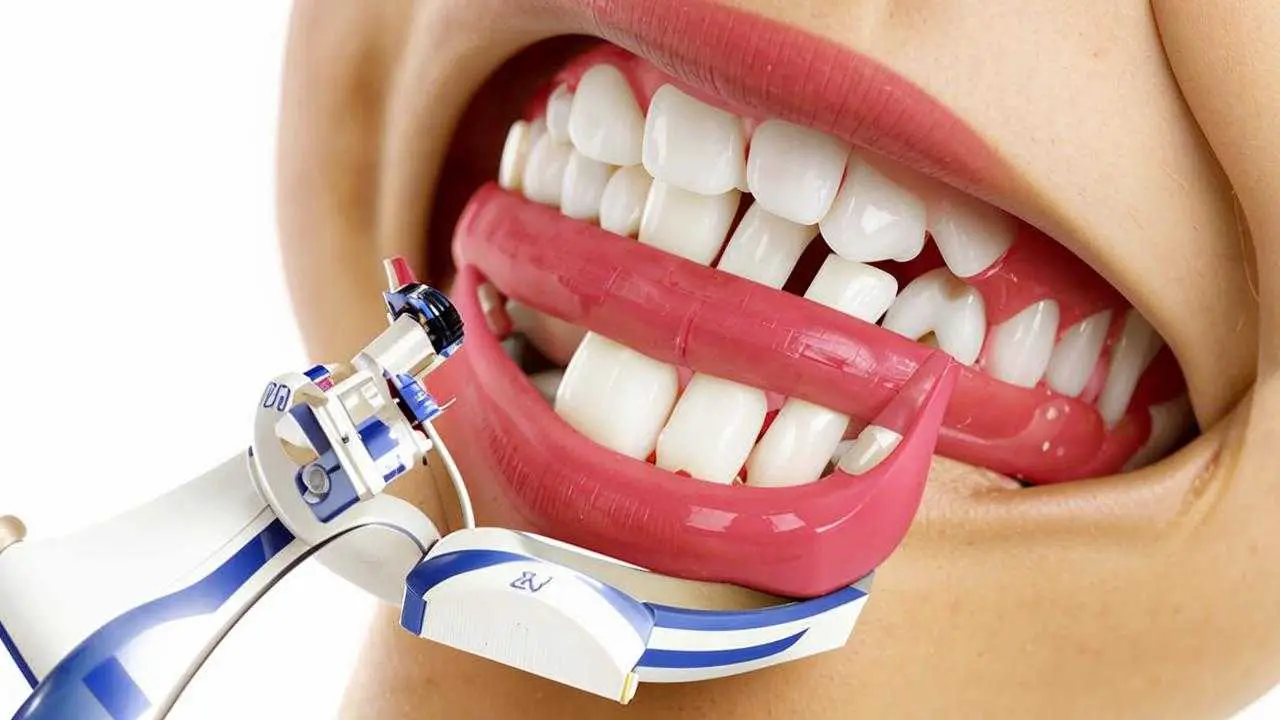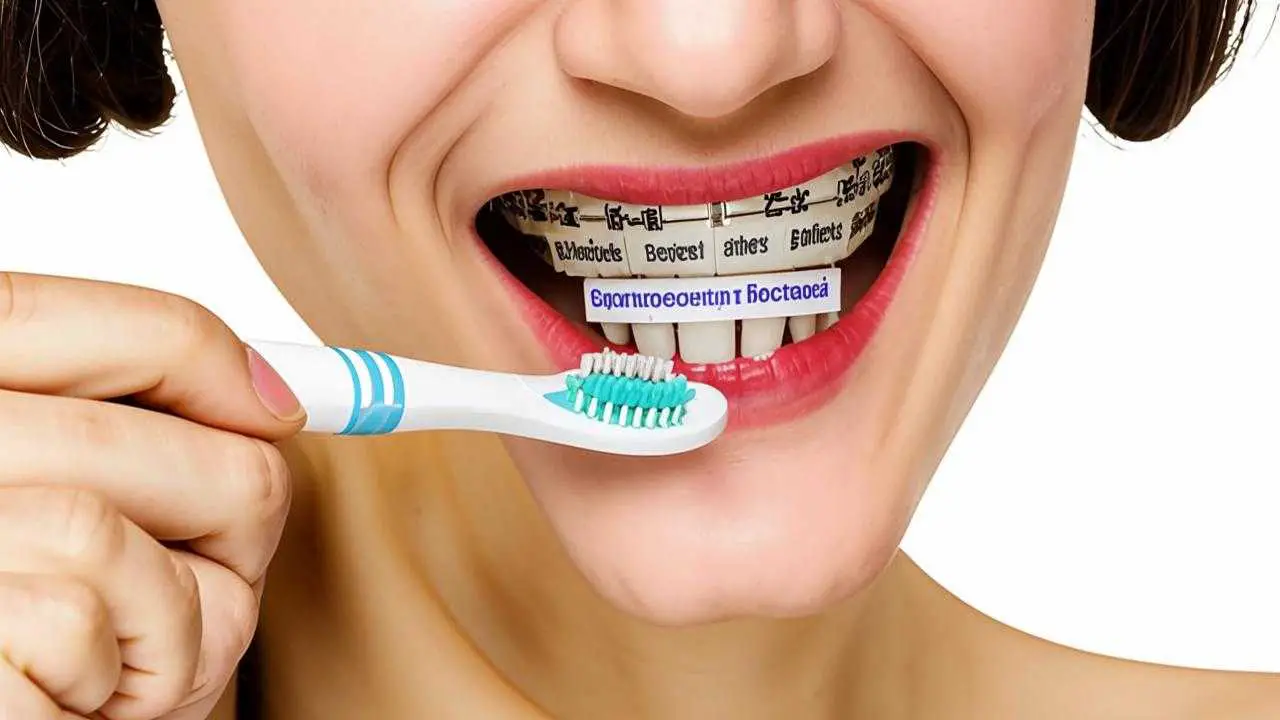Dentists never tire of emphasizing how important it is to brush your teeth properly and do it regularly. In the oral cavity of every person lives a huge number of bacteria. The most active fluid in the body, saliva, neutralizes their action, but it is not able to destroy the bio-threat on its own. Brushing comes to the rescue.
We brush our teeth to remove from the enamel its main enemy – a biofilm of bacteria (plaque). Biofilm settles on your teeth after every meal. Sticky food fragments, mainly carbohydrates and sugar, help it do this. Layer by layer, the bacteria build up on the surface, producing acids.
Gradually, these acids eat away at the enamel and penetrate the tooth. This is how tooth decay, the most common dental disease, occurs.
If plaque is not removed, it builds up, hardens and becomes tartar. Then it gets under the gum, causing inflammation of the tissue around the tooth. This is periodontitis, the second most common oral disease.
Slowing down plaque formation is the goal of dental hygiene.
How often adults should brush their teeth
The mandatory minimum is morning and evening. But it is best to brush after every meal.If you do not have a brush, you can use dental floss. It cleans well between the teeth, where food accumulates the most.In case there is neither, you can rinse your mouth with water. The best time to brush your teeth is within 5 minutes after eating.
In the evening it is worth paying more attention to the procedure. The fact is that at night the body produces less saliva. As a result, its protective function is reduced. It is important to clean the teeth well from biofilm, so that it does not accumulate on the enamel overnight.
What is the best way to clean your teeth
The market offers a huge variety of toothbrushes. The main criterion for choosing an ordinary brush, is bristles made of quality nylon and a handle made of good plastic. After all, the main thing is the correct algorithm of brushing your teeth. Otherwise, the coolest toothbrush will not cope with its task. You need to change the brush when:
- The bristles have deviated from the vertical axis, “mussed”.
- After 3 months from the last replacement
- After any dental procedure (treatment, hygienic cleaning, whitening).
Electric toothbrushes
In the hectic rhythm of modern life, a person does not always pay attention to:
- Use vertical and circular brush strokes instead of horizontal ones;
- Brush your teeth for at least 3 minutes;
- Be sure to clean the sides of the teeth
- Don’t forget about the back teeth
Partially, an electric toothbrush can help solve this problem.
- A manual toothbrush can make no more than 400 strokes in 3 minutes. An electric toothbrush makes about 20,000 pulsing strokes and about 7-8,000 reciprocating strokes.
- With an electric toothbrush, you can worry less about brushing technique. Just hold the brush on the surface and it will do the rest.
- Many models have several modes: for everyday, gentle, whitening cleaning, gum massage.
- The presence of interchangeable brush heads allows you to use one brush handle for the whole family.
The heads on electric toothbrushes are changed with the same frequency as manual toothbrushes.
It is up to the patient to decide which brush to choose, but a dentist’s advice can help you decide.
Brushes of any kind should be stored in an upright position without caps. Moisture is a joy for bacteria, but they do not like a dry environment. So, brushes should be in a place that is well ventilated and not characterized by high humidity.
Dental floss (floss)
Floss is designed to clean the interdental spaces, which is where decay most often begins. It’s important to remember that floss is meant for regular use, not just when you have a piece of steak stuck between your teeth. After any meal, there is a lot of soft food debris left in between the teeth. They are a breeding ground for bacteria. It’s best to keep a box of floss handy and floss after every meal.
Irrigator
The basis of the irrigator is a water pump. It provides a fairly powerful stream of water.
Benefits of an irrigator:
- Removes biofilm from the enamel surface
- Cleans the interdental spaces
- Cleans plaque from the gum pockets
- Removes plaque from the tongue or gums
- Does not traumatize the gum
- Indicated for hypersensitive teeth
- Improves blood circulation by massaging the gums
Irrigator does not replace brushing
Irrigators have been proven to be more effective in removing plaque, reducing bleeding, and reducing sensitivity than floss and brushes.
There are no contraindications to the use of irrigators, but people with cardiovascular insufficiency should consult a doctor.
Additional methods
As an alternative to flossing, dentists suggest using interdental brushes. They have proven themselves in patients with braces, dentures and sensitive teeth. Some studies confirm the greater effectiveness of brushes in removing plaque compared to floss. That’s not the case with toothpicks. They’re great for getting stuck bits of food out, but they don’t remove plaque. But toothpicks can damage the mucosa or leave scratches on the enamel without any problems.
Which toothpaste to choose
Toothpaste in the prevention of dental diseases, plays as important a role as proper hygiene.
- Hygienic toothpastes help to clean enamel from plaque
- Preventive toothpastes prevent the onset of diseases,
- Therapeutic toothpastes target oral diseases.
- Whitening pastes lighten enamel
Further pastes are divided into groups, depending on the purpose for which they are used:
- To prevent tooth decay
- Fluoride pastes Enamel consists of a special substance, hydroxyapatite. Fluoride ions react with it to form a new substance, fluorohydroxyapatite. It is much more resistant to the acids that cariesogenic bacteria produce.
- Paste without fluoride Calcium-saturated pastes are not as effective as products with fluoride, so they are recommended only for the prevention of fluorosis in regions where there is an increased content of fluoride in the water.
- Anti-inflammatory Contains therapeutic components that contribute to the normalization of microflora and have a wound-healing effect. Suitable for bleeding and swelling of the gums.
- Reducing the sensitivity of enamel (desensitizing) These pastes have a low abrasiveness index: 25-35 (conventional – 75). The active ingredients of such products are strontium chloride, hydroxyapatite, zinc citrate. They clog the dentinal tubules, the movement of fluid in them stops, the teeth cease to react acutely to stimuli.
- Bleaching These pst have a higher abrasiveness index (15-200), so they should be used with caution, not on a permanent basis, but courses. In addition, the active oxygen in the composition can contribute to the softening of enamel.
Memo how to properly brush teeth
There are several techniques for brushing teeth. The use of each depends on personal preference, oral condition, age and dentist’s recommendations. General recommendations for personal hygiene are as follows:
- It is necessary to moisten the toothbrush, preferably with warm water.
- Squeeze a small amount of toothpaste onto it, about the size of a coffee bean.
- Open the teeth slightly (depends on the technique) and start brushing.
- Brush your teeth for at least 3 minutes with a manual brush and 2 minutes with an electric brush.
It is important to follow the same sequence to develop a habit and not skip individual teeth.
Classic method
- The tooth rows are mentally divided into 4 parts: right, left, top, bottom.
- Brush the teeth starting from the right (or left, if it is more convenient) side of the upper jaw, gradually moving to the other side.
- Then the procedure is repeated with the lower teeth.
- The brush is held at a 45 degree angle. Movements from the gingival to the cutting edge, sweeping. The number of repetitions for each tooth – at least 10.
- The chewing surface of the molars are cleaned with back and forth movements in a horizontal plane.
- To clean the posterior surface of the anterior teeth brush vertically.
When using this method, it is recommended to brush with a medium hard toothbrush, floss, brush or irrigator.
Bass Method (modified version)
This technique is recommended for adults with tooth sensitivity or periodontal disease. Patients with these conditions experience discomfort when brushing their teeth using the classic method. This leads some of them to stop brushing their teeth altogether. The Bass technique makes it possible to still perform hygienic procedures. The brush for this method should be soft, with a straight handle and straight bristles, no bends and protrusions. There are special brushes for brushing teeth using the Bass technique (Curaprox ultrasoft, Revyline, TePe).
- The brush is not held in the fist, but like a pen, with 3 fingers.
- The angle of inclination of the brush is 45 degrees towards the gums.
- Arrange the bristles so that half of them are on the gum and half on the tooth.
- Moving along the edge of the gingiva make circular, vibrating movements without moving the brush to achieve that the bristles go under the gum.
- Complete the cleaning of the segment with a vertical sweeping gesture.
- The brush is moved only with the brush, due to which the movements are soft and gentle.
- After cleaning the front side, the position of the brush is changed to vertical and the same movements clean the inner surface.
- The chewing side is cleaned with horizontal movements.
Additional cleaning will be provided by brushes, floss or irrigator.
How to clean teeth with braces
Dental care during orthodontic treatment is especially important.
The methods of brushing teeth with braces are the same as without them. However, the Bass method has a better track record because it is gentler on the enamel and the structure itself. Teeth are brushed in the usual pattern,on top of the braces and then underneath.
The braces are an obstacle to a regular toothbrush. Dentists recommend orthodontic (V-shaped) brushes. But even they are not able to clean the enamel completely.Therefore, they produce special, mono-bead brushes, which are brought under each lock vertically, cleaning the space around. Mono-bud brushes can be used without toothpaste.
During treatment, it is acceptable to use electric toothbrushes, but it is necessary to choose tips with soft bristles and medium speed.
The space between the teeth is cleaned in several ways:
- Flossing with dental floss. You should be extremely careful not to tear the lock.
- Superfloss
- This is also floss, but it has a rigid end that is easier to thread through the bracket. The spongy part of the floss is thicker and softer than regular floss.
- Interdental brushes The size of the brush is selected by the dentist using a special probe.
The irrigator cleans all surfaces best. Water penetrates into the farthest corners and washes away food debris. In addition, instead of water, you can use therapeutic solutions recommended by the dentist. Irrigator does not traumatize soft tissues and enamel. Water massages the gums, improves blood circulation and thus tissue nutrition.
Regular, thorough dental hygiene will keep your teeth healthy and make your smile dazzling.

